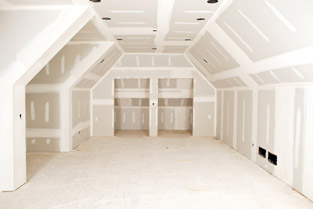
ASTM C1264 Cited in Drywall Safety Act
ASTM C1264 Addresses Origin and Source Labeling of Drywall and Other Gypsum Products
In response to the importation of contaminated drywall that caused health and safety hazards when used in home construction, the Drywall Safety Act of 2012 (PL 112-266) was signed into law by President Barack Obama on Jan. 14. The new law cites ASTM International standard C1264-11, Specification for Sampling, Inspection, Rejection, Certification, Packaging, Marking, Shipping, Handling and Storage of Gypsum Panel Products.
"I appreciate the strong bipartisan approval of the Drywall Safety Act of 2012," says Inez Tenenbaum, chairman, U.S. Consumer Product Safety Commission. "The law gives CPSC important tools to ensure that new domestic and imported drywall is marked as to origin and conforms to limits on sulfur content. CPSC staff collaborated with ASTM on the drywall labeling standard, and we look forward to working with ASTM and members of the C11.01 subcommittee to ensure speedy adoption of a drywall content standard that protects consumers."
The Drywall Safety Act requires the CPSC to set regulations based on C1264, which was developed by ASTM Subcommittee C11.01 on Specifications and Test Methods for Gypsum Products, part of ASTM Committee C11 on Gypsum and Related Building Materials and Systems. The standard provides the CPSC, states, suppliers and consumers with an effective tool for supply chain communication by specifying that each gypsum panel product or package must be marked for the thickness, the name of the producer or supplier, the brand name, if any, and the ASTM specification for the product. The inclusion of C1264 in the Drywall Safety Act will help builders and consumers better understand the origin and source of drywall and other gypsum products.
"Separating the problem drywall from other products was made more difficult by the limited labeling practices of some producers," says Dick Engbrecht, chair of C11.01, who notes that the most recent revisions to C1264 expanded the labeling requirements to make identification of drywall by manufacturer, date made and country of origin easier.
The act provides for an effective and efficient means of ensuring that the CPSC adopts the most updated version of ASTM C1264. ASTM standards are reviewed and revised at least once every five years to ensure that the standards continue to meet industry and consumer needs and reflect new information or technologies. The act's prescribed means of using the most updated ASTM standard ensures public health and safety and reduces confusion in the marketplace.
Under the act's provisions, ASTM International will notify the CPSC of any updates to the labeling standard within 60 days; the CPSC will then have 90 days to disapprove ASTM's recommended changes. If the CPSC accepts the most updated version of the ASTM standard, then the new version becomes effective 180 days after ASTM's initial notification.
Because sulfur content levels in drywall have been associated with elevated corrosion rates in a home, the act requires that the CPSC issue a regulation that limits the sulfur content for drywall manufactured in the United States or imported from abroad. In lieu of issuing a federal rule, the CPSC may adopt a voluntary consensus standard, developed by C11.01, that addresses the level of sulfur content in drywall. Currently, ASTM test methods do not address the sulfur content in drywall, however, C11.01 intends to bring together public and private stakeholders to determine how to best address this need through the possible development of a technical standard.
 SN Home
SN Home Archive
Archive Advertisers
Advertisers Masthead
Masthead RateCard
RateCard Subscribe
Subscribe Email Editor
Email Editor